| Botanical Name |
|
| Family |
Apocynaceae - The Oleander or Dogbane family. |
| Pronunciation |
kar-ISS-uh hem-at-oh-KAR-puh |
| Common Name(s) |
Afrikaans: Karoonoem-noem
|
| Plant Group |
- Shrub A woody plant of relatively low height, having several stems arising from the base and lacking a single trunk; a bush.
|
| Plant Size |
- Medium to Large
| Tree | 15m to 20m |
| Shrub | 2m to 3m |
| Perennial/ground cover | 60cm to 75cm |
| Bulb | 60cm to 1m |
| Succulent | 60cm to 1m |
|
| Position |
- Light or Dappled Shade Found below trees with sparse, open foliage. Ideal for the protection of herbaceous plants.
- Partial Shade The area is in shade for part of the day and in full sun for part of the day.
- Sun The area is in full sun for all or most of the day, all year round.
|
| General Information |
- Drought Tolerance: High The plant is well adapted to arid conditions; it can survive long periods of drought and high temperatures without extra water.
- Evergreen Plants that have leaves all year round.
- Fragrant / Aromatic These plants posses a strong, usually pleasant odour.
- Frost: Hardy The plant can withstand freezing temperatures or frost without artificial protection.
- Roots Non-invasive Safe to plant near pools, paving, walls or buildings.
- Thorns / Spines / Prickles Thorn: A hard, woody, pointed branchlet.
Spine: A modified leaf forming a hard, sharp-pointed outgrowth.
Prickle: A small, sharp-pointed outgrowth growing from the bark of the plant.
- Water Wise Plant species originating from low rainfall regions that require less water to survive and thrive than other plant species.
- Wind Tolerant Plants able to withstand the effect of strong winds.
|
| Specific Information |
Carissa haematocarpa is an irregularly shaped small tree or medium to large shrub with large numbers of stout, forked thorns. The hard, leathery, green to olive-green leaves are relatively small and end in spiky points. The small, round, black fruits are much loved by birds. This sturdy plant is a useful addition to a mixed barrier hedge when included with Scutia myrtina, Dovyalis species, Gymnosporia species and Putterlickia species.
Note: Officially Carissa haematocarpa has been classified as synonymous with Carissa bispinosa but I have chosen to discuss them separately as the flowers and fruit differ, as do their habitats and distribution.
|
| Ad Break |
|
| Flowers |
| Description |
small tubes 7 mm long with broad, short overlapping lobes
|
| Season |
- Spring to Summer Plants will seldom bloom for the entire season as given in the list, but should flower during a period within these parameters.
|
| Colour |
|
| Growth Rate |
- Slow Specifying growth rate can be very misleading as there is considerable variation of growth rate depending on type and species of plant, available water, supplementary feeding, mulching and general care, as well as the plants suitability and adaptability to the garden environment.
|
| Plant Uses |
- Attracts bees, butterflies or other insects This plant attracts insects which can be food for birds or other creatures in your garden.
- Attracts Birds This plant will attract birds.
- Barrier Plant A very thorny shrub, tree or scrambler that can be used to create an impenetrable barrier.
- Boundary A plant useful for planting around the edges of the property to form a green or colourful backdrop, an impenetrable hedge, to hide walls or create privacy.
- Hedge Suitable trees or shrubs planted relatively close together so that the branches intertwine to create a barrier. This can be formal – the plants are regularly trimmed to produce a neat shape, or informal – the plants are left to themselves to create a natural hedgerow.
- Rock Garden An area constructed of larger rocks, arranged naturally, to emphasise the use of stones as a main element. Generally plants used do not need a lot of care.
- Suitable for bonsai A shrub or tree that lends itself to being dwarfed.
- Suitable for coastal gardens Plants adapted to dry, sandy soil, forceful wind, limited rainfall and intense sunlight.
- Wild Garden An indigenous garden planted for the benefit of wildlife and birds. Provides food, water, a variety of mini-biomes and no poisonous chemicals are used.
|
| Distribution and Habitat |
from Worcester in the Western Cape to Grahamstown in the Eastern Cape and in the southern regions of Namibia, growing in arid Karoo and semi-Karoo regions, in a wide variety of soil types with pH ranging from 6 to 8
|
| Planting Suggestions |
Although Carissa haematocarpa will tolerate a wide variety of soils, it is a slow grower. Supplementary water, applications of organic fertilizer, an occasional dressing of compost and a good layer of much will do much to encourage faster growth. The species is seldom seen in nurseries but can apparently be grown from cuttings. Rooted stems can often be found around the base of the plant. Grows easily from properly ripened, fresh seed.
|
| Lorraine's Garden Notes |
I have had no success with cuttings from any of the Carissas but they do grow well from rooted stems taken from below the plant.
|
| Medicinal Uses |
|
| Ad Break |
|


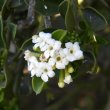
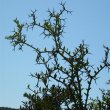
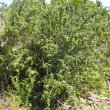
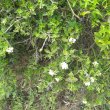
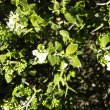


Discuss this plant
Share knowledge, ask a question or give an experience.